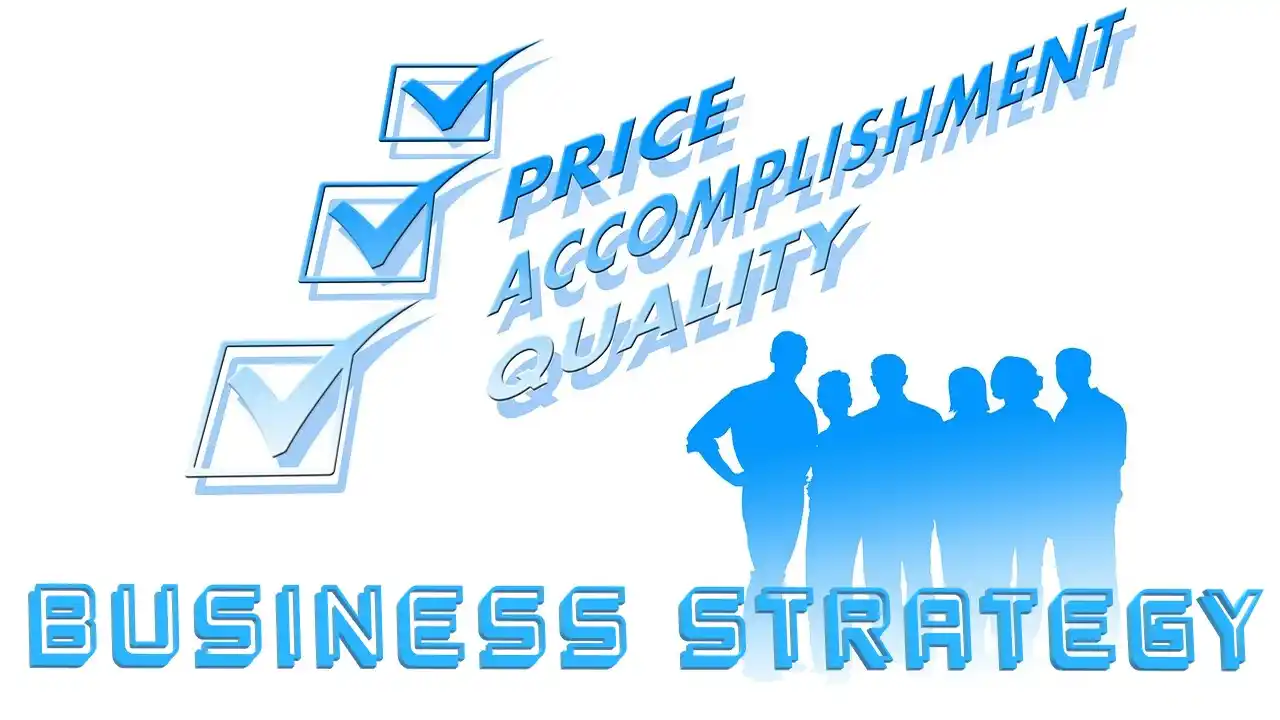Small businesses must analyze both their assets and weaknesses to determine the extent of their competitive advantage. With this information, they will be better able to select the optimal course of action and allocate the available resources. To be competitive, small businesses must foster an environment that encourages employees to generate new concepts and methods of operation. They may therefore find it easy to develop a growth strategy and build their company using creative and interesting techniques. We’ll look at the types of small business level strategy and talk about the related topics in this area.
Regularly monitoring and analyzing a plan’s effectiveness is essential for small businesses. Therefore, it will be simple for them to determine where they need to make adjustments to their methods. Small businesses can benefit from the expertise of industry professionals, consultants, and teachers. This can help them identify weak spots, generate new ideas, and create a plan that suits their objectives and available resources.
Top 10 – Types of Small Business Level Strategy
Small enterprises that want to succeed on the market must create and adhere to a well-thought-out business plan. However, it can be difficult to choose the best approach at times. If a modest business wishes to succeed on the market, it must develop a strategy. But for a method to be effective, it must be meticulously planned and implemented. In this article, we will discuss about types of small business level strategy in brief with examples for your better understanding.
Strategy for Innovation
Key to the innovation strategy is the creation of new products and services to meet consumers’ ever-changing requirements. This strategy is particularly advantageous for small businesses in industries or markets that undergo rapid change, as it enables them to respond rapidly to new situations.
For this method to be effective, modest businesses will need to invest in research and development to discover new innovative strategies. They may also need to collaborate with other companies in the same industry or with industry experts to learn about emerging trends and technologies.
Strategy for Cost Leadership
“cost leadership” is one of the most common categories of methods used by small businesses. The purpose of this business plan is to produce or sell products or services at a lower cost than competitors while maintaining the same quality. This strategy aims to offer consumers lower prices than competitors, which will result in more customers and increased revenue.
To achieve this objective, minor businesses attempt to reduce expenses in a variety of areas, including production, sales, and marketing. To remain ahead of the competition, they may also automate their processes, negotiate better deals with their suppliers, and reduce their overhead expenses.
Strategy for Branding
The development of a robust brand personality is a crucial component of any branding strategy. This helps a company distinguish itself from its competitors and communicate with its target market. A strong brand may help small businesses retain customers for longer, charge higher prices, attract new customers, and retain existing ones.
Small firms must create a distinctive brand identity that reflects their ideals if they want this strategy to be effective. To boost brand recognition, investing in marketing and advertising is crucial to establish credibility and awareness. This is another types of small business level strategy.
Strategy for Customer Service
A key component of any customer service plan is to provide exceptional service that exceeds customer expectations and inspires loyalty. Small businesses that excel at customer service can earn more money, distinguish themselves from competitors, and retain and acquire new customers.
For this strategy to be effective, small businesses will need to invest in their employees’ education and provide them with the tools they need to perform their tasks well in order to provide excellent customer service. In addition, they may need to devise methods for swiftly and effectively responding to the needs and comments of their customers.
Strategy for Concentration
The types of small business level strategy entails concentrating your marketing efforts on a small segment of the market and providing them with customized products and services. This strategy is similar to the niche strategy, but rather than concentrating on a specific product or service, it focuses on a specific customer type.
To use this method effectively, small businesses must first identify their target market and then develop a strategy to meet that market’s requirements. They may need to spend money on marketing and sales in order to attract consumers from the target market.
Diversification Plan
The purpose of the diversification strategy is to enable the company to compete in markets and industries unrelated to its primary competencies. This strategy could cost you money, but it could also help you grow and earn significantly more cash.
To make this strategy work, small businesses must first identify new industries or markets that are comparable to what they already do, and then develop an entry strategy for those markets. They may also need to invest in the creation of new products or services to satisfy the needs of the expanding market or business.
Strategy for a Specific Market
Niche marketing is the process of concentrating on a specific segment of the market and adapting your products and services accordingly. This method benefits small businesses by focusing on one topic, allowing deeper understanding despite limited resources.
Identify a niche market and modify products/services to satisfy its needs for successful small business implementation. Additionally, they may acquire a positive reputation in their niche market, which could help them attract more consumers and increase their sales.
Strategy for Differentiation
Small businesses utilize differentiation more frequently than other strategies. Developing a product or service that differentiates a company from its competitors is a crucial phase in this procedure.
Small businesses can attract consumers willing to pay more for unique products if they differentiate themselves from their larger competitors. Small businesses must prioritize either innovation, quality, design, or customer service for this strategy to be successful. They may also develop a distinctive brand or marketing strategy to distinguish themselves from the competition.
Strategy for Growth
The company’s development strategies consist of entering new markets and increasing its market share in existing ones. Small businesses can use this strategy to expand through new products, locations, or acquisitions.
Small businesses must conduct market research to identify potential and create a growth plan for successful strategy execution. Additionally, they may need to raise funds to pay for the expansion and invest in marketing and sales to attract new consumers. This is another types of small business level strategy.
Strategy for Collaboration
The partnership approach entails collaborating with other businesses to create opportunities that benefit both parties. Partnerships help small businesses expand by accessing new markets, customers, products, services, and specialized knowledge.
Small businesses must find collaborators who share their ideals and objectives for this strategy to succeed. Partners should devise a comprehensive plan outlining roles, responsibilities, and profit-sharing arrangements for the partnership.
FAQ
How to Implement a Customer Service Strategy for Small Businesses?
As part of a customer service strategy, it is essential to provide consumers with service that exceeds their expectations. Encourage employees’ education to boost customer service and enhance small businesses with this effective strategy. They might also need to come up with strategies for responding to consumer requirements and feedback quickly and efficiently.
How can a Branding Plan Help a Small Business?
A branding strategy entails developing a powerful brand identity that resonates with consumers and helps a business stand out from its rivals in the same industry. A strong brand boosts small businesses with customer retention, higher prices, new customer attraction, and loyalty retention.
How Might a Cost-cutting Plan Help a Small Business?
Cost leadership: offer cheaper goods/services than competitors without compromising quality. This strategy enables small businesses to offer lower prices than their competitors, which is advantageous for small businesses. This can lead to an increase in customers and sales.
Final Words
Smaller enterprises should prioritize measurable, lucid objectives. Developing corporate objectives can assist a business in selecting a sound business strategy and making well-informed decisions regarding resource allocation. In this article, we will cover the types of small business level strategy along with equivalent matters around the topic. Gain a more global perspective on examples of business level strategy topic by reading this report.






